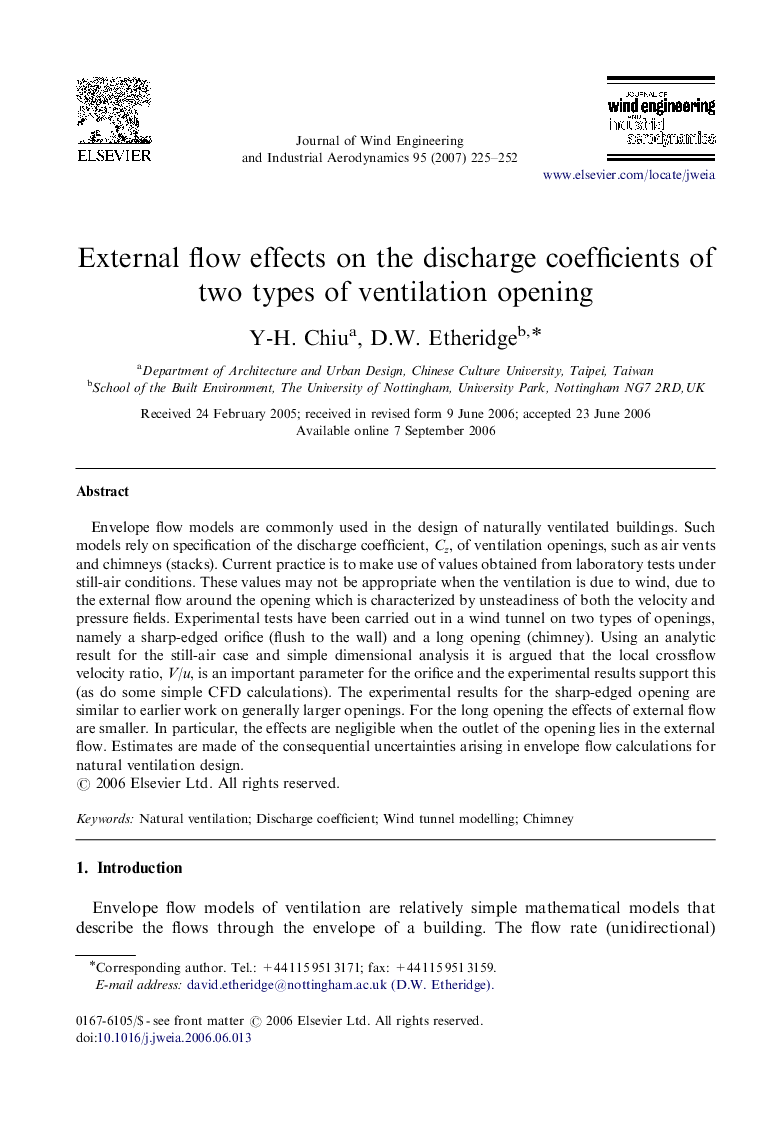| Article ID | Journal | Published Year | Pages | File Type |
|---|---|---|---|---|
| 292646 | Journal of Wind Engineering and Industrial Aerodynamics | 2007 | 28 Pages |
Envelope flow models are commonly used in the design of naturally ventilated buildings. Such models rely on specification of the discharge coefficient, Cz, of ventilation openings, such as air vents and chimneys (stacks). Current practice is to make use of values obtained from laboratory tests under still-air conditions. These values may not be appropriate when the ventilation is due to wind, due to the external flow around the opening which is characterized by unsteadiness of both the velocity and pressure fields. Experimental tests have been carried out in a wind tunnel on two types of openings, namely a sharp-edged orifice (flush to the wall) and a long opening (chimney). Using an analytic result for the still-air case and simple dimensional analysis it is argued that the local crossflow velocity ratio, V/u, is an important parameter for the orifice and the experimental results support this (as do some simple CFD calculations). The experimental results for the sharp-edged opening are similar to earlier work on generally larger openings. For the long opening the effects of external flow are smaller. In particular, the effects are negligible when the outlet of the opening lies in the external flow. Estimates are made of the consequential uncertainties arising in envelope flow calculations for natural ventilation design.
